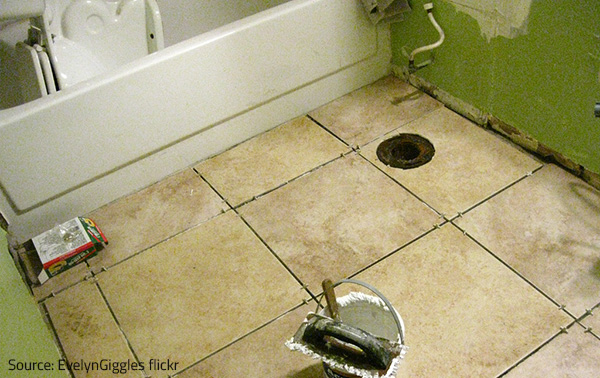Are you on the lookout for content concerning How to Prevent Bathroom Water Damage?

The washroom is extremely susceptible for wet accumulation and prospective water damages due to the regular use water in it. This write-up offers easy assessment strategies to help discovering water damages threats.
The frequent use of water in the restroom makes it very at risk for moist accumulation as well as prospective water damages. By evaluating it regularly, you can decrease water associated damages.
The complying with collection of examinations is very easy to perform and ought to be done when in every three months in order to keep your restroom in good shape as well as to avoid possible water problems brought on by the bath tub, the shower, pipe joints and also plumbing, sinks, closets, and also the commode
Do not forget executing these examinations and also be detailed while executing them. Remember that these straightforward assessments can save you a great deal of cash by offering early signs for water damages
Sinks as well as Cabinets
Sinks and closets are revealed to wetness and moisture everyday and are frequently forgotten. Check frequently under the sink and on the kitchen counter above it. Fix any kind of drip in the trap as it might recommend drain troubles. Browse the sink, slow draining pipelines may indicate an obstructed drain. Change sink seals if they are broken or loosened.
Tub and Shower
The shower and also bath tub need unique interest and upkeep. Check the floor tiles as well as change if split. Make sure that there is no missing out on grout in between the tiles. Evaluate and change split caulking at joints where the walls satisfy the floor or the tub. Blocked drains as well as pipes issues will certainly avoid the bath tub from drying and also may show serious issues beneath the tub. Seek advice from an expert quickly to prevent architectural damage. Focus on stainings or soft areas around the tub wall surfaces as they may suggest an inner leak.
Plumbing
Signs for water damages are tough to spot considering that most pipes are mounted inside the wall surfaces.
Pay special interest to floor covering and walls wetness as well as spots as they might show an unnoticeable plumbing trouble. Check wetness degrees in adjoining spaces too.
The Toilet
The bathroom is a vulnerable water junction. Examine the water lines and search for leakages around the toilet seat, in the hose pipe, and also under the water tank. If you discover any kind of signs of wetness on the flooring around the commode, check for leaks in the toilet edge and also tank seals.
Know that hanging commode bowl deodorants enhances the opportunities for clogs.
Water Damage Signs In The Bathroom To Avoid Cleanup
Musty smell
This is one of the easiest signs to catch because musty smells are so odorous. The damp, earthy, moldy smell should be a big red flag. The smell will develop when moisture gets trapped in surfaces, and begins to facilitate mold growth. Leaking pipes under cabinets, inside walls, and behind shower fixtures will cause moisture to stay trapped and not dry, which will lead to mold growth and spread. As soon as you notice any musty smells in your bathroom, have it checked for hidden water damage and cleanup signs.
Visible mold
If the smell isn’t there to give it away, sometimes you will actually see mold growth. Finding mold in your bathroom is a serious problem, because mold is very harmful to your health. By the time mold growth is visible, it also means that water damage has already occurred and been present for some time. The only way the mold problem can be resolved is to find the source of the moisture and get it stopped. To safely and adequately remove mold, you need to have professionals handle the remediation. Do not waste any time in getting mold problems addressed, fixed, and sanitized so that you can protect you and your family from the many respiratory symptoms caused by mold exposure.
Damaged floors
Bathroom floors should be able to withstand some exposure to water while still remaining in good condition. However, when excess exposure or water leaks occur, they will begin to damage even the most water-resistant flooring. If you notice any cracking, bubbling, staining, or warping on your bathroom floors, there is probably a water leak somewhere causing the distortion. If you notice areas of the floor have become softer, or even have a spongy feeling, there is probably damage to the subfloor. Subflooring is typically made up of plywood. When plywood is exposed to water or moisture, it will absorb it. Once it has become saturated, the weight of the excess water will cause the wood to swell and soften. Check the floors in your bathroom frequently to catch any of these sings before they lead to damaged subflooring.
Changes on walls
When water leaks behind walls, it will cause changes in the drywall. Peeling plaster, blistering paint, and soggy wallpaper are all good indicators that excess water is building up behind the wall. Water leaking behind drywall will cause it to swell and be soft to the tough. If you start to notice gaps along the trim of your walls, or where tile meets the wall, it could also be a strong indicator that there is a leak behind the wall. Any changes, distortion, or damage on the walls should be evaluated as soon as you notice it to prevent further water damage and cleanup.

I'm very eager about How to Prevent Bathroom Water Damage and I am assuming you enjoyed the new entry. Remember to take the time to share this blog if you appreciated it. We enjoy reading our article about Preventing Water Damage in the Bathroom.
Get Estimate